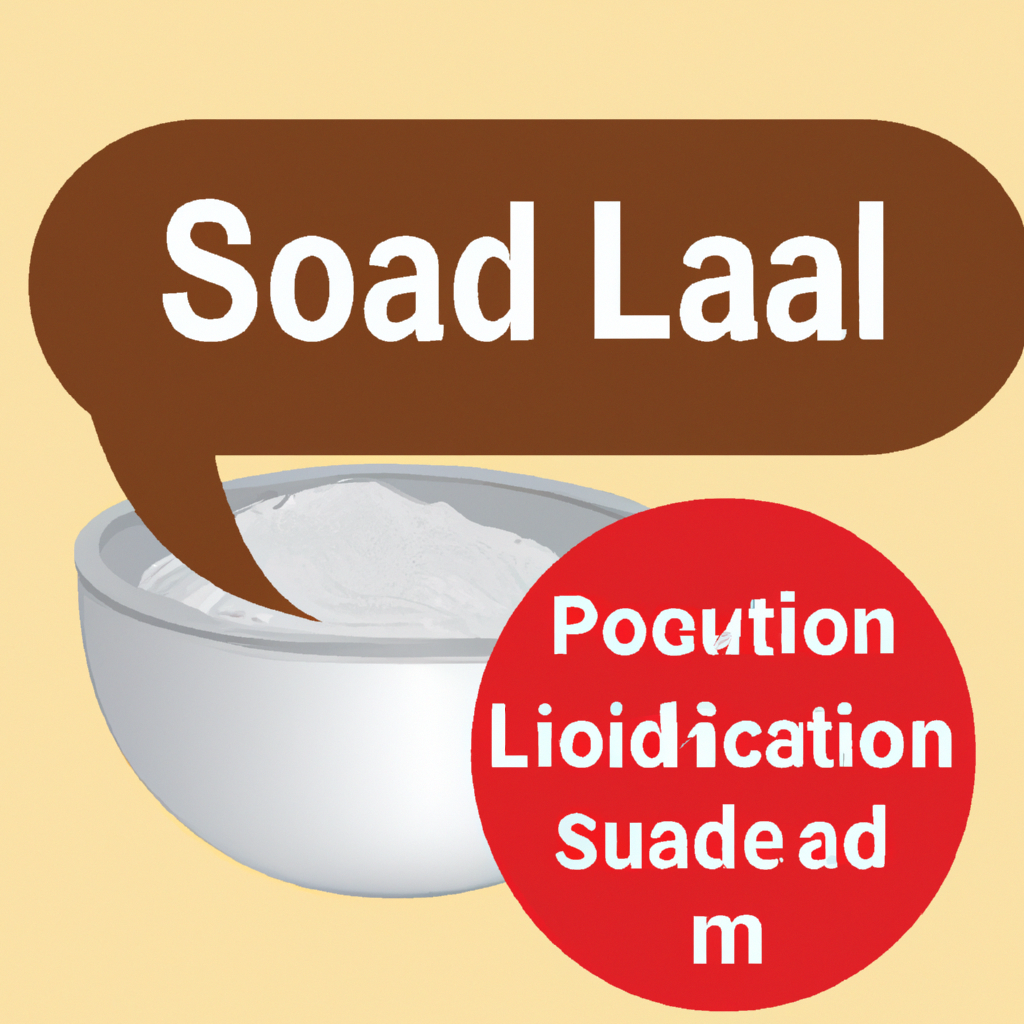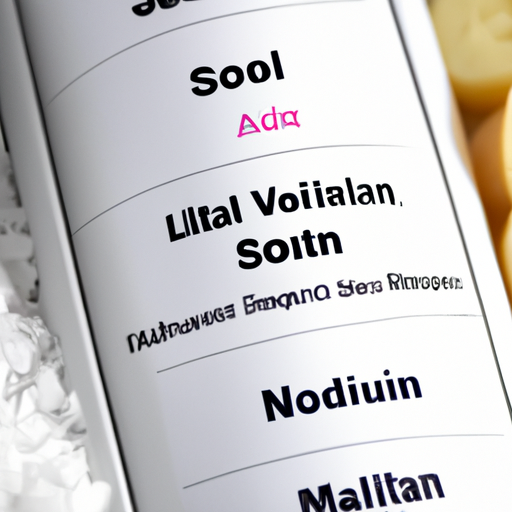Are you looking for ways to reduce your sodium intake? Many people are on a mission to eat a healthier diet, and one way to do this is by finding low sodium food options. Instead of trawling through all the aisles of your local grocery store looking for healthy food, wouldn’t it be great if there was a comprehensive list of low sodium food options that you could refer to? Well, you’re in luck! In this article, we will look at if there is indeed such a list, and provide tips on using it to make achieving a low-sodium diet just a little bit easier.
1. Low Sodium Food: An Overview
Low sodium food varies from a range of low-sodium snacks and main meals to low-sodium produce like fruits and vegetables. Depending on your dietary preferences, there is something for everyone. With more accessible low-sodium recipes being available online, these tasty options are easy to find and convenient to cook.
Benefits Of Low Sodium Foods
- Lower blood pressure
- Reduced symptoms of hypertension
- Reduced risk of heart disease and stroke
- Improved overall health
Making the decision to switch to a low-sodium diet can be an extremely rewarding one. Not only can it benefit our physical health in a number of ways, but it can also benefit our mental health as well. Limiting sodium intake encourages us to find creative alternatives to some of our favorite ― and most salty ― foods and snacks.
2. Building a Low Sodium Diet
A low sodium diet can be one of the most difficult diets to keep up with in a daily routine. But, with a few tips and tricks, you can find ways to incorporate this important change into your lifestyle. Here are some ways to help you out:
- Omit processed foods: Instead of buying pre-prepared meals, opt for cooking fresh food at home. Not only would this help you better monitor the sodium content of your food, it would keep your grocery bill low.
- Read product labels: When shopping, don’t forget to take a closer look at nutrition facts. Compare several brands and pick the one with the least amount of sodium.
- Season your food differently: Get creative and experiment with other flavors like herbs, spices and vinegars to add taste without adding sodium.
Keep these tips in mind and you’ll be well on your way to maintaining a healthy, low sodium diet. Don’t forget to speak with a nutritionist to make sure your dietary requirements are being adequately met.
3. A Comprehensive Low Sodium Foods List
Eating a low-sodium diet is one of the healthiest choices anyone can make. It can help maintain blood pressure and reduce the risk of heart disease and stroke. To make it easier to plan low-sodium meals, we’ve put together a comprehensive list of low sodium foods.
From greens to grains to meats – all food groups are included! Vegetables are some of the most naturally low-sodium options available. Start by trying out some of these options:
- Lettuce
- Kale
- Cauliflower
- Carrots
- Mushrooms
- Tomato
- Spinach
- Zucchini
Wholegrain carbs are a great source of nutritional goodness and a base for a delicious low-sodium meal. Stick to these options
- Quinoa
- Brown Rice
- Oatmeal
- Barley
- Whole wheat pasta
- Whole grain bread and wraps
Meat, eggs and dairy are important sources of protein but can sometimes be high in salt. Here are some low-sodium options that can easily find:
- Turkey Breast
- Chicken Breast
- Eggs
- Low-fat cottage cheese
- Reduced-fat milk
- Unsalted nuts and seeds
As you can see, there are plenty of options out there to choose from. Eating nutritious and delicious meals is within reach!
4. Health Benefits of a Low Sodium Diet
Reducing your intake of sodium can significantly improve your overall health. From reducing your blood pressure to reducing inflammation, a low sodium diet has many positive benefits when incorporated into your lifestyle.
- Reduced Blood Pressure: Sodium holds on to water, which increases the volume of your blood and consequently increases your blood pressure. Therefore, reducing your sodium intake will reduce your blood pressure levels, reducing your risk of stroke, heart attack, and other cardiovascular diseases.
- Weight Loss: High sodium intake encourages retention of water; therefore reducing sodium intake can reduce water retention and lead to weight loss.
- Reduced Inflammation: A low sodium diet greatly reduces any inflammation that may occur in the body, lowering the risk of other diseases.
But eating a low sodium diet is not just about quitting the salt shaker. Many packaged processed foods contain sodium, so it is important to read labels and look for low-sodium alternatives. Most packaged foods have their nutritional information on the label, which includes how much sodium is in each serving. So as long as you’re mindful of what you’re eating, you’ll be able to eat a low sodium diet and reap the many health benefits!
Q&A
Q: Are there any comprehensive lists of low sodium foods that I can refer to?
A: Absolutely! You can check out the American Heart Association’s Low Sodium Food Shopping List. This handy list provides a comprehensive selection of vegetables, fruits, dairy products, proteins, grains, and snacks that are all low in sodium. This makes it easy to plan meals that fit within a low sodium diet. Plus, the list includes additional tips for selecting, storing, and preparing these low-sodium foods.
We hope that this article has helped you to gain a better understanding of low-sodium foods, and has perhaps even inspired you to try something new. From leafy greens to shellfish, there’s a whole world of delicious and nutritious low-sodium foods out there for you to explore. So why not get creative in the kitchen and try to create some truly flavorful and healthy meals that you can be proud of?
In recent years, many people have been looking for a definitive list of low sodium foods with which to create a healthy diet. Low sodium intake can be important for people with high blood pressure, kidney or heart disease, and other health issues. It can also be beneficial for individuals looking to reduce their salt intake for general health enhancement. Fortunately, there are several resources available for those looking for a comprehensive list of low sodium foods.
The National Health and Nutrition Examination Survey (NHANES) collects dietary information from thousands of individuals each year in the United States. Not surprisingly, high sodium intake in the United States is well documented in the population. The NHANES has taken this data and created their own comprehensive list of low sodium foods. This list includes a variety of fruits and vegetables, whole grains, legumes, poultry, fish, and low-fat dairy.
In addition to the NHANES list, the American Heart Association (AHA) provides their own version. They recommend limiting sodium intake to 2,300 mg per day, with an ideal target around 1,500 mg. Those with certain conditions are encouraged to further lower their sodium intake. The AHA list is slightly different than the NHANES list as it includes contributions from the USDA food labeling regulations for defining a low-sodium food. The AHA list also contains food categories such as dairy, grains, and baked goods, whereas the NHANES list is more specific within each food group.
Lastly, individuals may wish to consult with a registered dietitian to create a personalized low-sodium food list. Registered dietitians can consider medical and lifestyle factors and create a personalized list tailored to the individual’s needs.
In conclusion, there are multiple resources available for those looking for a comprehensive list of low sodium foods. The NHANES and AHA provide their own comprehensive lists and registered dietitians can create a personalized list to better meet an individual’s needs. With the help of these resources, individuals can be on their way to reducing their sodium intake and improving their overall health.
